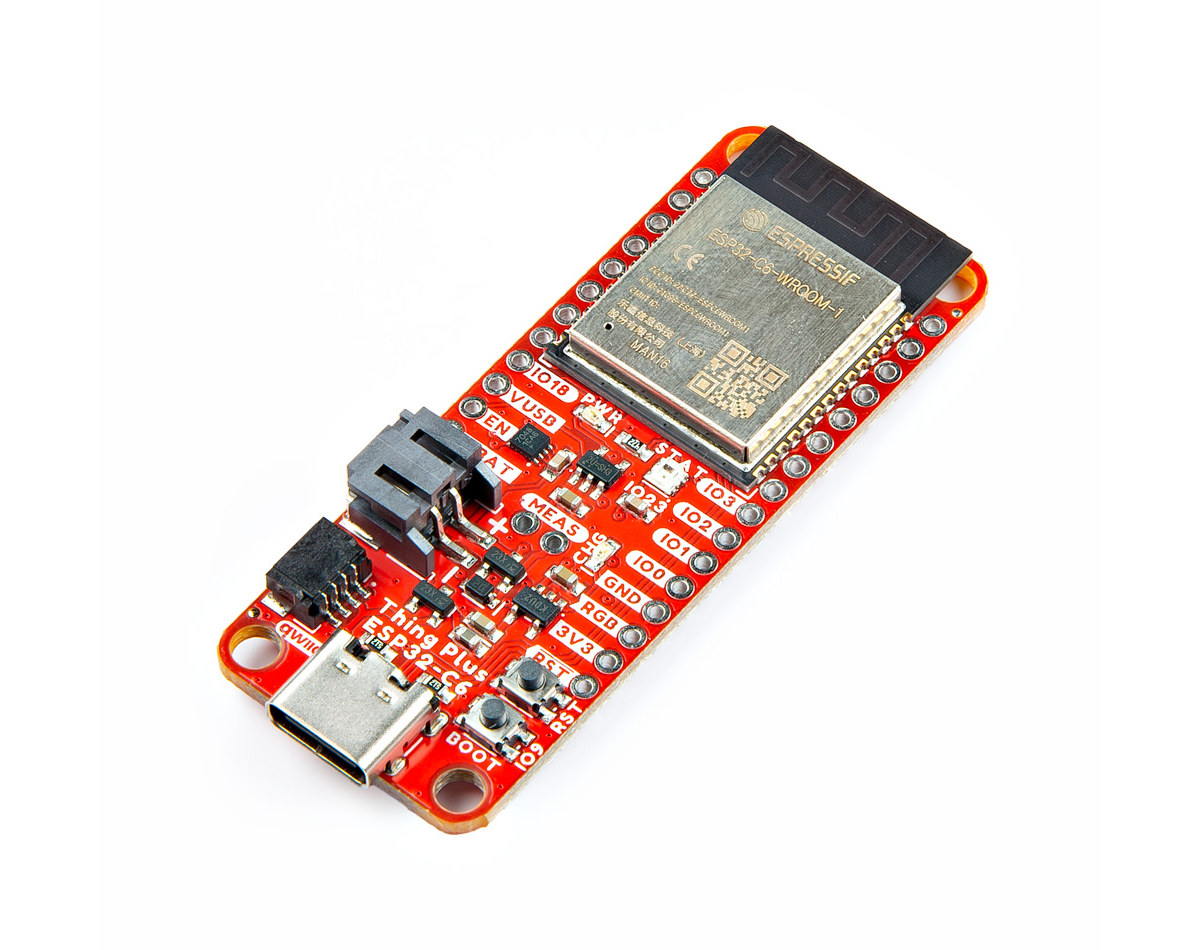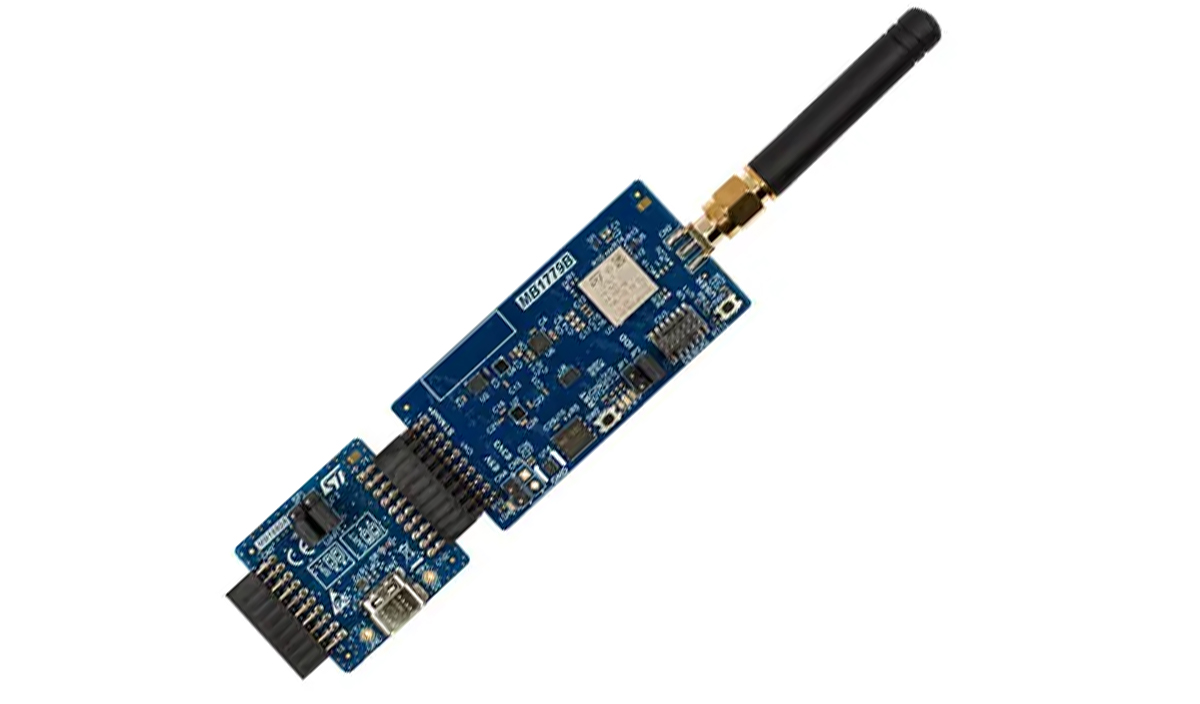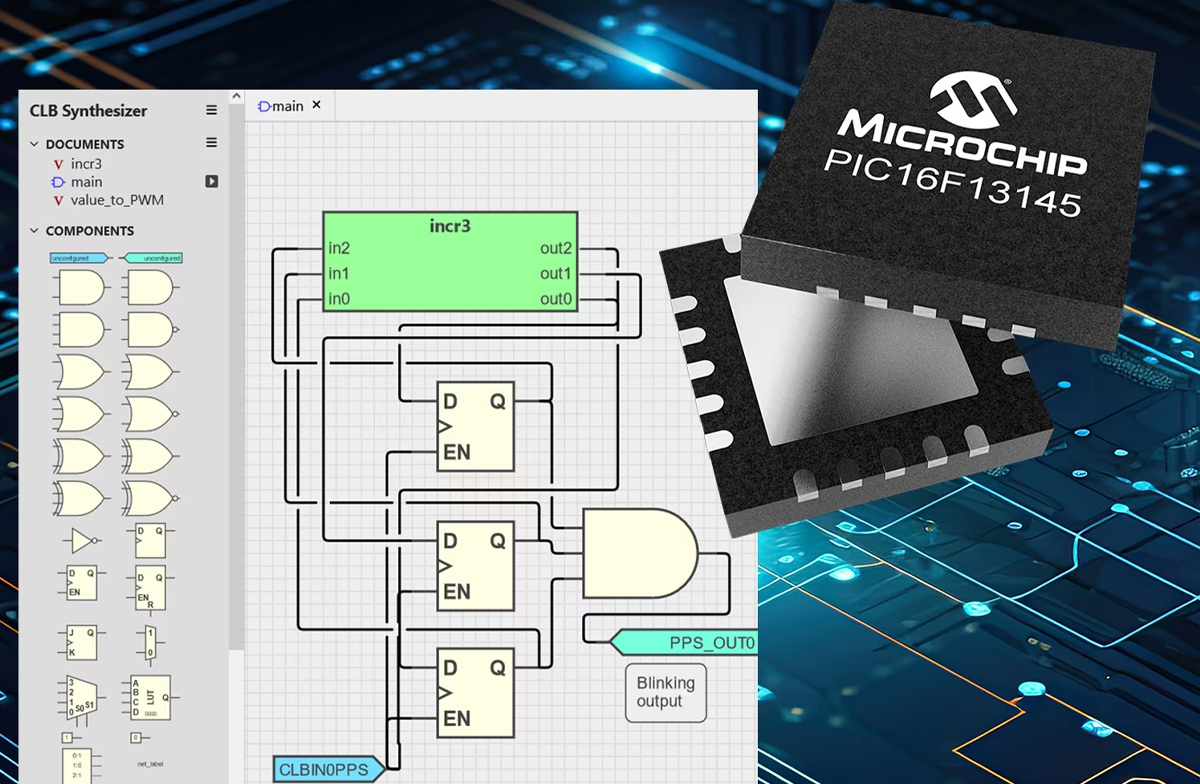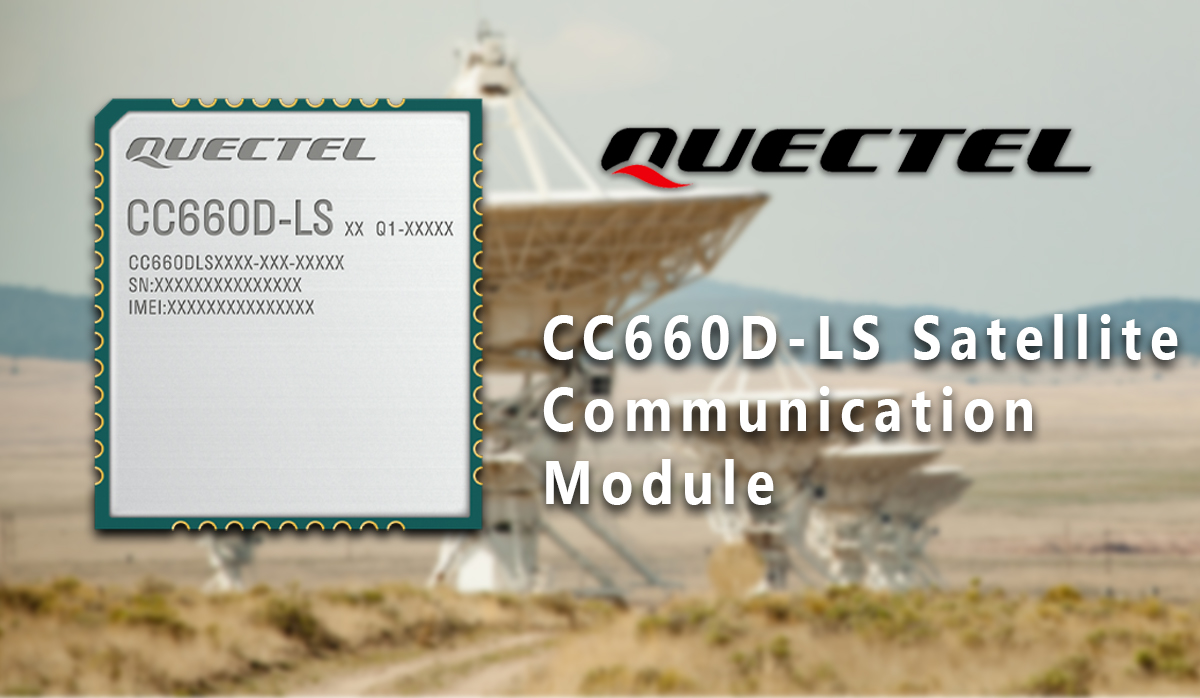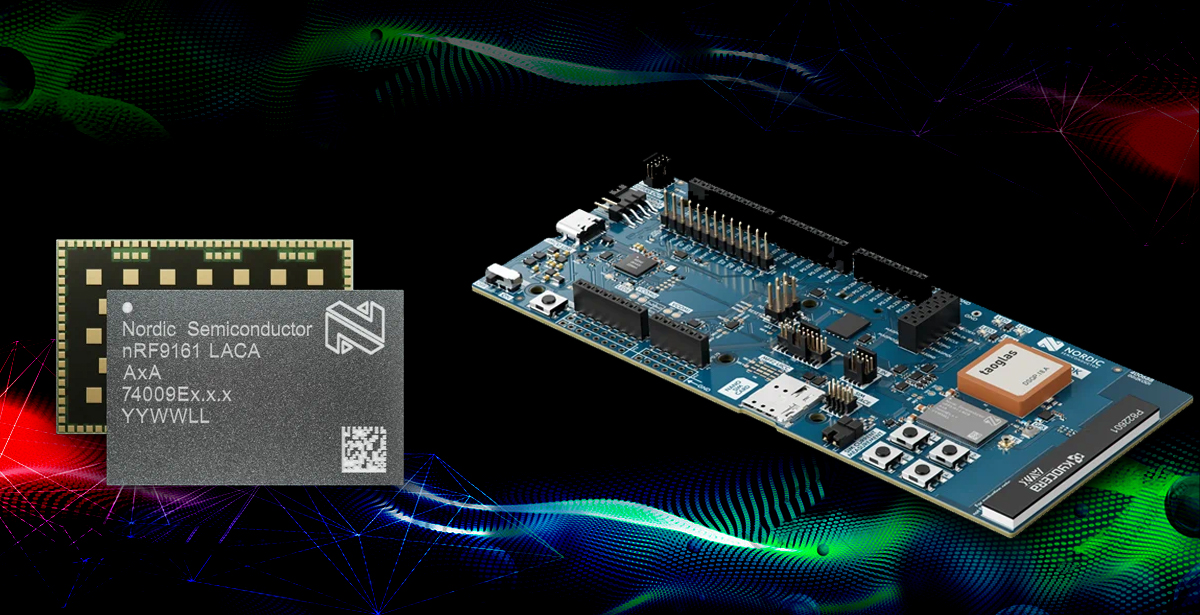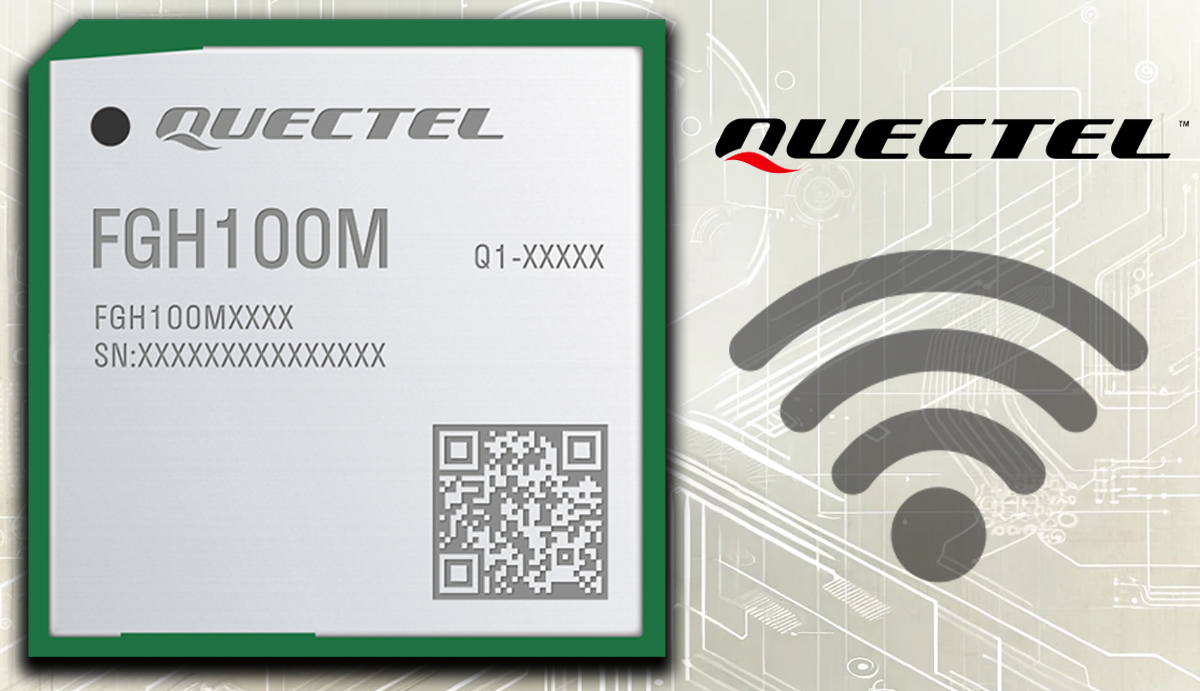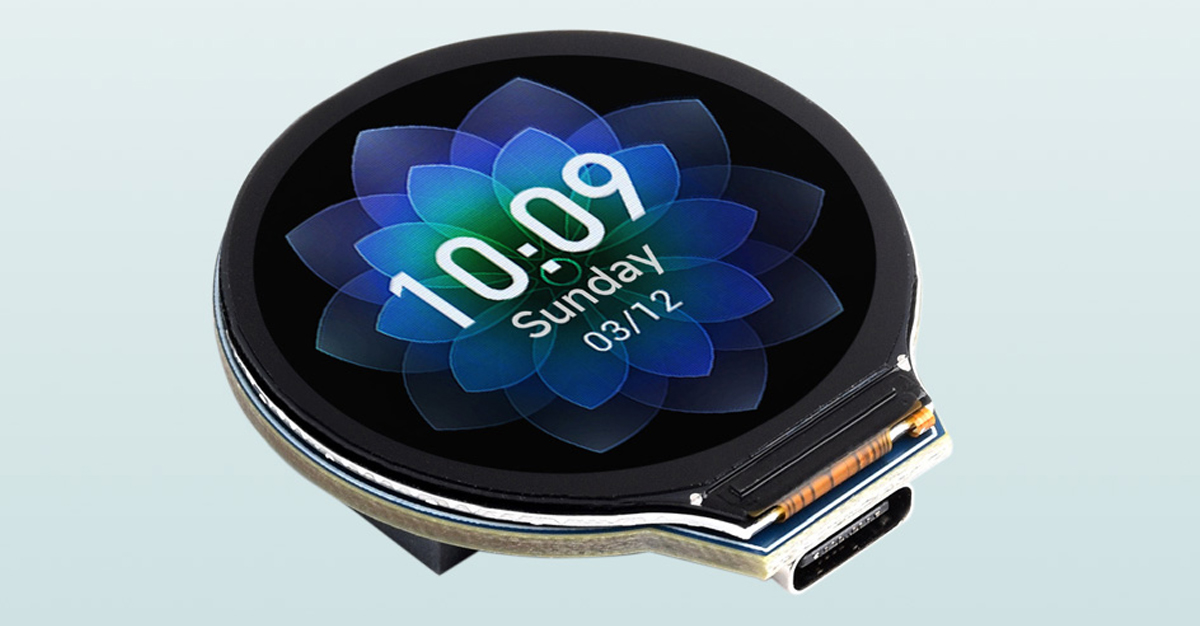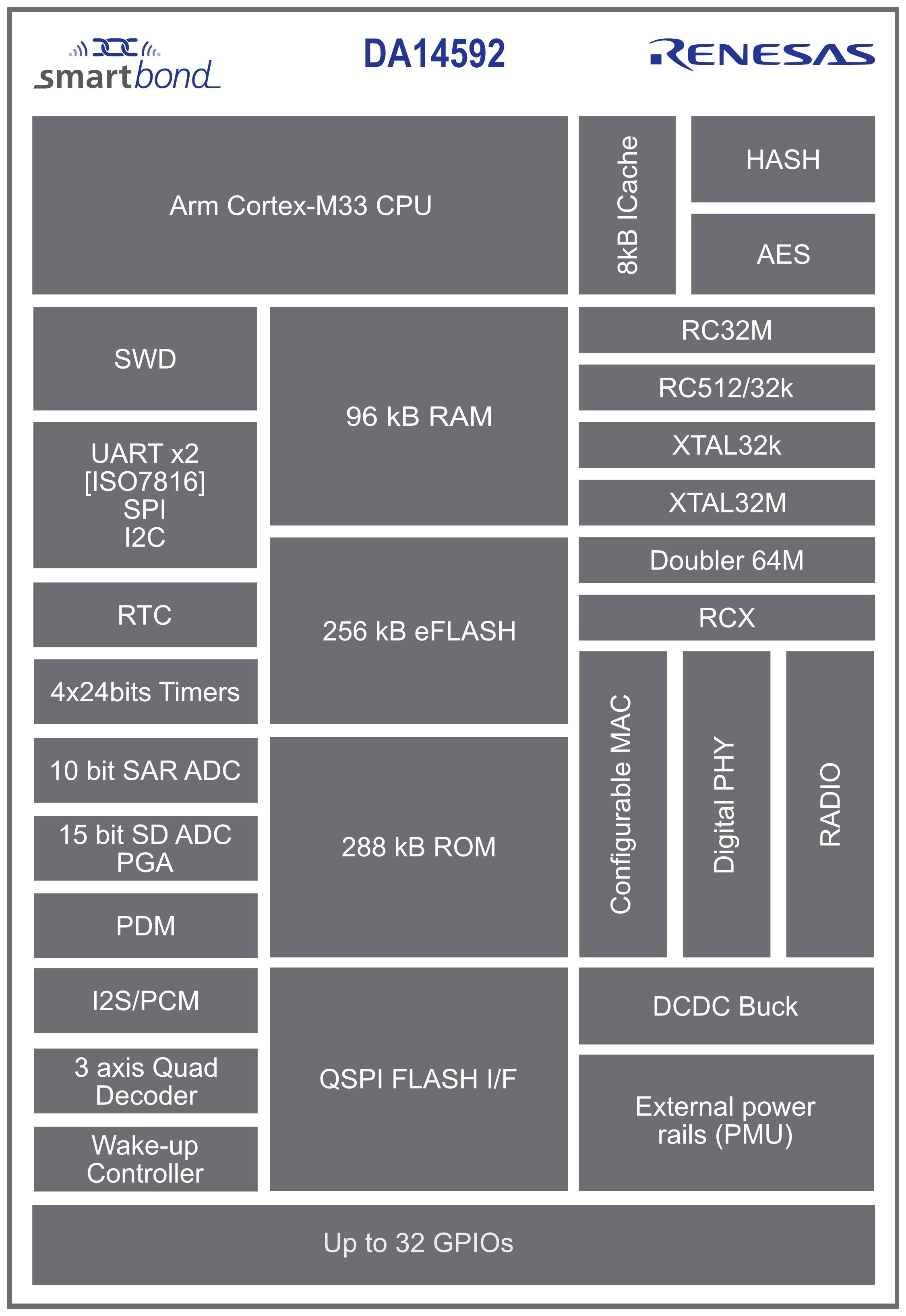SparkFun has launched yet another ESP32-C6 board with the “Thing Plus – ESP32-C6” based on the ESP32-C6-WROOM-1-N16 module with 16MB flash and a PCB antenna and range of I/Os and power options. The board features 28 through holes with up to 23 multi-function GPIOs and a Qwicc connector for expansion, and supports 5V or LiPo battery power through respectively a USB-C port a 2-pin JST connector combined with a charging chip, and a fuel gauge. SparkFun Thing Plus – ESP32-C6 specifications: Wireless module – ESP32-C6-WROOM-1-N16 MCU – ESP32-C6 32-bit single-core RISC-V microcontroller with 2.4 GHz WiFI 6, Bluetooth 5 LE, and 802.15.4 radio (Zigbee and Thread); Matter-compatible Storage – 16 MB flash PCB Antenna Storage – MicroSD card slot USB – 1x USB Type-C port for power and programming Expansion 12-pin + 16-pin headers with 23x multifunctional GPIOs Up to 7x 12-bit ADC channels Up to 2x UART channels (with […]
STMicro STM32WL5MOC SiP Module is pre-certified for LoRaWAN & Sigfox networks
STMicroelectronics has recently introduced the STM32WL5MOC system in package (SiP) module with a dual-core STM32 microcontroller, sub-1 GHz RF radio, power supply, and passive components into a 10×10 mm LGA package. According to ST, the new chip uses the STM32WL module which we have seen used in Arduino MKR-inspired MKR Windy board, smart building, and many other LoRa devices. STMicroelectronics’ STM32WL, an Arm Cortex-M0+ microcontroller, operates in sub-GHz ISM bands (413-479MHz, 826-958MHz, and 169MHz later in 2024) for protocols like wireless M-Bus (mode N) and Wize. It supports multi-protocol and multi-modulation (4-(G)FSK, 2-(G)FSK, (G)MSK, DBPSK, DSSS, OOK, ASK) for various wireless standards (Sigfox, KNX, WiSun, mioty, M-Bus, etc.) and introduces power-saving features for up to 15 years of battery life. STM32WL5MOC SiP module specifications: Core Specifications: STM32WL55JC SoC with 32-bit Arm Cortex-M4 and Cortex-M0+ CPUs, up to 48 MHz. Adaptive real-time accelerator (ART Accelerator) for efficient flash memory execution. DSP instructions […]
Microchip introduces PIC16F13145 Series MCUs with customizable logic
Microchip recently introduced the PIC16F13145 series of 8-bit MCUs featuring a Configurable Logic Block (CLB). This allows users to create custom hardware-based logic functions within the MCU. This approach lowers the BOM costs and boosts performance. Last year, we saw Microchip introduce PIC32CZ Arm MCU with a Hardware Security Module (HSM) and before that, we saw they launched LAN8650/LAN8651 10BASE-T1S single-pair Ethernet Controllers. Feel free to check those out if you are interested in the topics. Microchip PIC16F13145 Series MCU Specification: 32MHz PIC16 CPU core Up to 1KB User SRAM for application data Up to 14KB Flash memory with code protection features CLB Capabilities: Up to 32 basic logic elements – AND/OR/NAND/NOR gates, buffers/inverting buffers, D/JK flip-flops, multiplexers, 4-input LUT Dynamic configuration for on-the-fly changes Tri-state logic capability Inputs/outputs from software, I/O pins, and PIC® peripherals (ADC, PWM, DAC, etc.) Less than 6 ns BLE propagation delay at 5.5V (typical) […]
Quectel CC660D-LS IoT-NTN module is built for Skylo’s satellite network
Quectel recently announced the launch of the Quectel CC660D-LS IoT-NTN module, created in partnership with Skylo. Designed for two-way IoT (Internet of Things) applications this model supports the latest 3GPP Release 17 standards for IoT over non-terrestrial networks (NTN). Additionally, It can operate on L-band (1 to 2 GHz), and S-band (2 to 4 GHz) frequencies, making it ideal for asset tracking, fleet management, and agricultural and maritime uses. Last year, we wrote about Qualcomm 212S and 9205S satellite modems which were also developed in collaboration with Skylo. Quectel CC660D-LS IoT-NTN Satellite Module Specifications: Module Type – NTN satellite communication module Compliance – Supports 3GPP Rel-17 IoT-NTN Frequency Bands – Operates on L-band (B255) and S-band (B256/23) Internet Protocols – Abundant embedded Internet service protocols Power Supply – Supports low voltage power supply from 2.2–3.6 V Power Consumption – Ultra-low power usage Sensitivity – Super-high sensitivity Temperature Range – Extended […]
Nordic’s nRF9161 SiP and DK support cellular IoT and DECT NR+ non-cellular 5G technology
Nordic Semiconductor recently announced the availability of the nRF9161 system in package (SiP) and pre-certified Development Kit designed to power both cellular IoT and non-cellular 5G technologies. This new device can connect to LTE-M, NB-IoT, and DECT NR+ networks while maintaining long battery life, better location tracking, and strong connectivity. Additionally, Nordic offers support through their nRF Connect SDK and the Nordic Developer Academy. The nRF9161 SiP is an improved version of the nRF9160 SiP, which has been the basis for various projects like the Actinius Icarus SoM DK, Conexio Stratus, nRF9160 Feather LTE IoT and GPS Board, Ruuvi Node, and many other projects. Feel free to check those out if interested. The press release mentions that this new chip is an update of the nRF9160 and includes features like an Arm Cortex-M33 processor, 1 MB flash, 256 KB RAM, along with SPI, I2C, UART, PWM, and a 12-bit ADC […]
Quectel FGH100M Wi-Fi HaLow module based on Morse Micro MM6108 receives CE and FCC Certifications
In a collaboration, Quectel Wireless Solutions and Morse Micro have developed the FGH100M a Wi-Fi HaLow module, powered by Morse Micro’s MM6108 SoC. This module has achieved CE certification in Europe and FCC approval in the US, meeting high safety and environmental standards. After reading through the press release, I initially thought the 802.11.ah WiFi, known as WiFi HaLow, would be similar to other LPWAN standards like LoRaWAN or Sigfox. However, further research showed that Wi-Fi HaLow, operating in the 900 MHz band, was first announced in 2014 and got its name in 2016. However, in the following years, there wasn’t much interest in this wireless standard. But starting from 2021, it’s becoming more popular, and we’ve seen many HaLow-based products like a mini PCIe card, a WiFi HaLow development board, and a gateway kit to extend the range of IP cameras, and also ALFA Network’s AHPI7292S Raspberry Pi HAT […]
Waveshare ESP32-S3-LCD-1.28 development board with 1.28-inch IPS round LCD is available for $15
The Waveshare “ESP32-S3-LCD-1.28” is an ESP32-S3-based display board featuring a 1.28-inch round LCD screen with a 240×240 resolution, driven by the GC9A01 display driver chip. It also includes a Li-ion battery charger, a QMI8658 6-axis IMU (for motion tracking), a USB Type-C connector, and wireless capabilities. This board is quite similar to others like the Lilygo T-RGB, Round Display for XIAO, ESP32-S3 Round SPI boards. However, it’s thinner and more affordable. Waveshare ESP32-S3-LCD-1.28 development board specifications: Wireless MCU – ESP32-S3 Xtensa 32-bit LX7 dual-core, up to 240MHz frequency. Display: 1.28-inch round IPS LCD. Resolution – 240×240 pixels. 65K color. Display Chip – GC9A01A. IMU Parameters: Sensor – QMI8658 Accelerometer resolution – 16-bit; Range (Optional): ±2, ±4, ±8, ±16g. Gyroscope resolution – 16 bits; Range (Optional) – ±16, ±32, ±64, ±128, ±256, ±512, ±1024, ±2048°/sec. Memory: Built-in 512KB SRAM. 384KB ROM. Onboard 2MB PSRAM. External 16MB Flash memory (W25Q128JVSIQ). Wireless Connectivity: […]
Renesas releases the DA14592, a new dual-core Cortex-M33/M0+ BLE chip with integrated flash
The DA14592 System-on-Chip (Soc) is Renesas’ “lowest power consumption and smallest, multi-core Bluetooth LE device.” According to the company, this chip’s design was achieved by making careful tradeoffs between on-chip memory and die size. The chip offers an ultra-low power mode that uses only 2.3mA when transmitting radio signals at 0dBm and consumes 1.2mA to receive radio signals. It also supports a hibernation mode that uses about 90nA and can extend the operating life of battery-powered products. The active mode is best for processing-intensive products and uses 34µA for every MHz of CPU clock. Projected key applications for the DA14592 chip include crowd-sourced location (CSL) tracking as used in Apple’s Airtags, remote control units, human interface devices, asset tracking, IoT end nodes, data logging, connected health, and activity tracking. Renesas DA14592 specifications: CPU cores: Cortex-M33F running at up to 64MHz as application core Cortex-M0+ at 64MHz as configurable MAC Memory: […]


